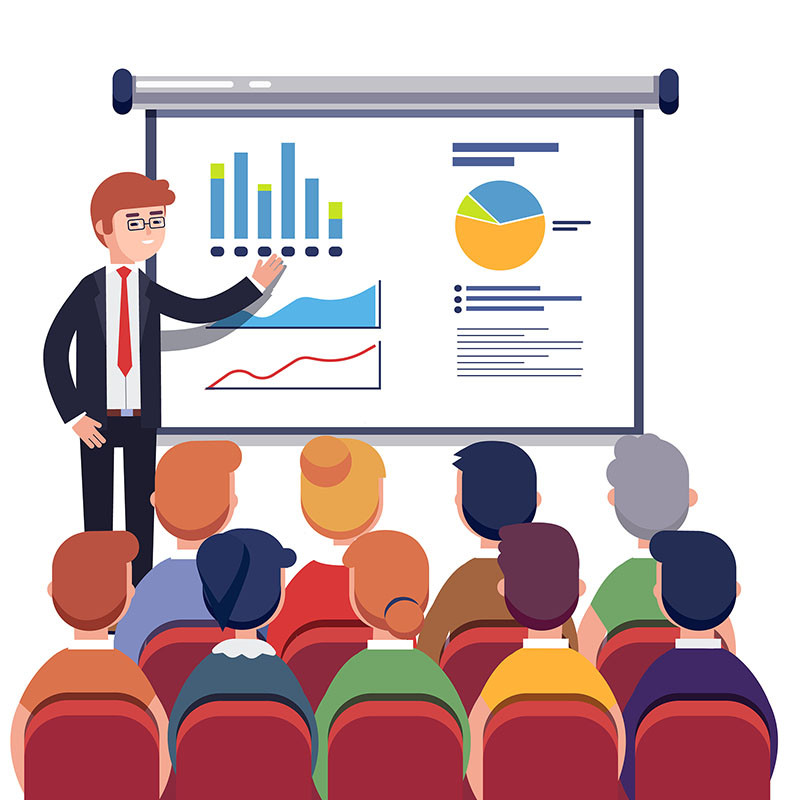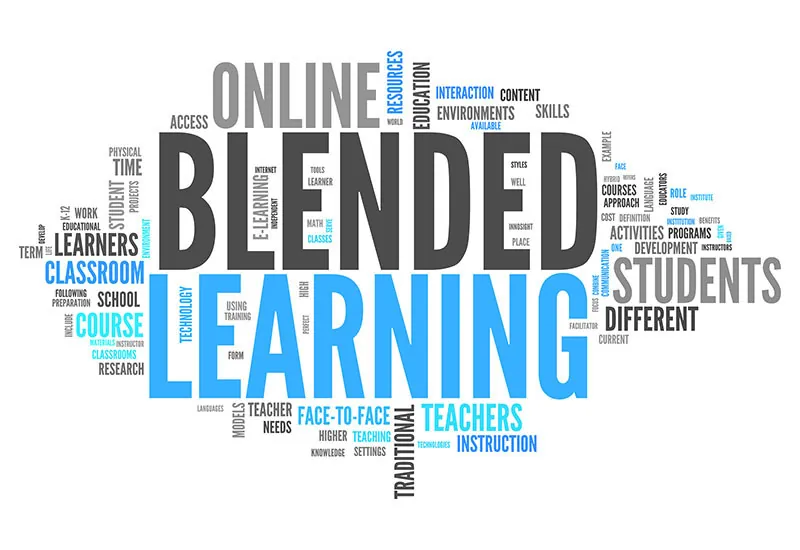This is a guest post written by Mark Allen Roberts. Mark is a public speaker, author of the book: Branding Backwards and has 34+ years experience within his field.
When was the last time you trained your salespeople?
Did the training result in the behaviour change and the measurable improvement you desired?
Did your salespeople apply the training; use the new sales tools correctly and at the right time in the buyers buying process?
I hear many of you saying no, no, and I am not sure.
The main reason why your sales training did not stick is your sales super stars and sales managers have not been trained to be trainers.
In this post I will share 12 reasons why you want someone with a sales training competency training your salespeople.
This topic reminds me of a post I shared some time ago about how sales super stars are promoted into sales management and in most cases fail.
Its not because they are not driven, or they do not know sales, or not smart for that matter, it is because there is a skills gap between selling customers and managing sales people.
“Each year companies spend over $20 Billion on Sales training and 85%-90% fails.”
– Rain Group
When I hear that quote, what I hear is companies spend $18 Billion per year and fail to receive a return on their training investment.
Why?
From my experience the leading reason why is those delivering the training have not been trained to be trainers and lack an understanding of training science.
The sales managers or sales super stars are training like they experienced, survived in some cases, and it is often death by PowerPoint.
Sales managers and sales super stars don’t know what they don’t know about training.( take it from me I have been guilty of this for years!)
For over 34 years I have been in a variety of sales roles.
When I have helped companies fix sales problems one of my steps is training.
In this step we teach the salespeople and marketing team the data we gathered from voice of the customer work and how to keep the sale moving to a close by providing the buyers what they need, when they need it in their buying process.
I would set aside a day or two offsite and show up and throw up with my Power Point slide deck. (Sound familiar?)

I would share the findings of our VOC work and win loss research then train the sales teams to be more customer centric and more buying process focused.
I would make salespeople aware of the new sales tools we created and coach them when to use them. If time permitted I would ask one or two salespeople to role-play what we just went over.
After the training we established new KPI’s that measured the behaviours we determined to be leading indicators and I spent about 60% of my time travelling with salespeople on four legged sales calls observing and coaching.
Looking back I was often frustrated that within days of sales training salespeople often went back to their relationship selling or worst yet price selling even though we just invested in value based sales training for them.
As their manager I could coach, reinforce and inspect what we expect. Even so, it was very frustrating to see the time we committed to training those days did not stick. It was also very expensive.
Fast forward to April 2017.
I was asked to be a sales training manager of a $3 billion company and training is my primary responsibility. My goal is to add value and make a difference.
I have taught at Marketing at local Universities and really enjoyed the experience and thought training full time would be a similar experience.
Have I done sales training before? You bet. Was it done correctly and did it drive the behaviour change companies wanted over the years alone…not always. ( I did not know what I did not know about training science)
A year ago I started to research and consume anything I could find about training adults, how our brains work, how adults want to consume training today and into the future, how to design a learning experience, the best sales training methods, and how to deliver training in an interactive way to make the learning stick.
I sought out thought leaders in sales training and interviewed them. I interviewed instructional design experts and reach training science research papers.
One of the people I started to follow and consume anything he wrote was Sean McPheat from MTD Training Group.
So imagine how humbled I was when he asked me to write a guest post for his blog.
If you are a sales leader or sales super star doing training today, I want to help you know what you may not know.
What are the 12 things most sales managers and sales super stars are not aware of?
1) Define your learning objective, the future state you desire
This sounds like one of those statements that are so obvious surely everyone does it right?
No, they conduct sales training as a part of a sales strategy, to support a goal.
But a learning goal is different than a learning objective.
The learning objective is a statement of what your trainees will be able to do after training.
2) Assess the current state
What sales competencies have been proven to help top performing salespeople on your team meet and or exceed sales goals?
Assess your sales team and managers. Do they have a mastery of these sales competencies? If not make sure your sales training closes those skills gaps strategically.
3) One and done is not a proven sales training method
Some teams I have helped believed you sign salespeople up for a training, either internal or with one of the training companies and they should get it.
Sales training was approached like one more thing on a to do list that needed a check mark that it was completed, not that it drove new behaviour.
The best training is spaced over time with immediate learning checks and application exercises.
If you are doing one and done sales training in house or with training company you need to be aware of learning science.
If your training is not reinforced within 24 hours 30-40% is lost, 48 hours 60% is lost and after just one week almost 100% of training will be lost.
4) Stack training strategically
I am reminded of my martial arts training and how strategic the training was designed.
First you learn basics and you will practice these basics for months.
Next you learn new movements that build on what you have already learned and practice those movements for months and continue practising the basic moments.
Then you will learn how to apply those movements. You will practice those applications slowly with different partners for months and maybe years.
Once you have demonstrated your skills you increase speed and start controlled sparing.
The instructors are creating a controlled stressful situation to see if you apply your training or resort back to your old behaviour in this controlled adaptive experience.
5) Blended learning produces behaviour change
There are many ways to teach someone and they all have a place in a strategic training program.
What we are most familiar with is instructor led training where the subject matter expert is in the front of the room training.
There is also elearning from your laptop, tablet and or cell phone.
Virtual training where you are online but in a live event with an instructor.
Adaptive learning where trainees are asked to demonstrated the skills they have learned often in a stressful situation.
Learning transfer can occur when a trainee reads an article, a book, white paper or even a blog for that matter.
Group and peer discussions have proven to be a very effective way to train particularly salespeople.
Simulation exercises that simulate real life situations your trainees will face.
Back in the day we called them role-playing. Quizzes and learning checks play a role in a blended learning program.
Coaching from the trainees’ managers’ provides a huge impact in the effectiveness of training.
One study I ready shared it increased training by 70%. If we are training we need to also be training sales managers.
There are a variety of proven training methods to drive behaviour change but sadly most companies believe instructor led training is all they have to work with.
We must also blend key learning areas like product, applications, markets, customer service, quality, professional skills and so on.

6) Business acumen training
I have shared one of the best B2B sales methodologies is Value Based Sales.
In order to execute a value based sale salespeople must understand business acumen and how their product and or service provide value to their customers.
7) Speaking skills and professional presence
When someone asked Warren Buffet what is one skill people should develop to be a leader in any role they choose it was speaking skills.
Many thought leaders discuss Emotional Intelligence and situational awareness and how top producing salespeople score high in both.
What should sales professionals say and what should they never say? The great news is they can be taught.
8) “Chunk it”
Just as there are proven sales processes there are proven training processes.
One of those processes is chunking your training content into 20-minute subject chunks.
9) Make training an interactive experience
Bob Pike said it best “ the brain doing the talking is the brain doing the learning” Be honest…its just us on this blog….how often do your trainees get to speak and interact in your training?( ya, I thought so)
10) 90 minute rule
Studies I have read on brain science as well as train the trainer training I have received has consistently shared training must be in no more than 90 minute segments without a break.
After 90 minutes with out interaction or a break, our minds go into a trance like state and everything you share will not be received or remembered.
11) Learning is a continuous process
Once your trainees complete a formal sales training program they need to be assigned additional training to refresh past training and applications to fill the skills gaps you identified in the post training assessments.
12) Micro learning, how people choose to consume learning today
If you want to know something, or better yet if your child wants to know something, …what do they do? They Google it!
The answers to the trainees’ most pressing current urgent need are but a click away.
You can find a You Tube video about any subject and you can consume when you need them.
By 2020 I read over 80% of sales training will be short micro learning courses specifically addressing a specific skill.
This is the new normal and we must adapt our training delivery to be consumed as our trainees want and need to consume it.
The last thought I want to leave you with is what could your sales manager or sales super star be doing if they were not training?
What is the opportunity cost of taking them out of their market, their hunting cadence if you will, and asking them to train?
From my experience most companies that have a sales manager or sales super start train do so for the following perceptions:
- Hiring a sales trainer is too expensive
- Our business is so different, so unique
- We need to make sure trainees learn “our way of doing things”
- We need training to be a short as possible so sales is back out selling
- What could a “trainer” teach us that our top sales stars could not
- We want more salespeople producing results like _____let’s have her train the rest of the team so they all bring in numbers like her
Every day as a leader in your company you make strategic decisions that support and align with your goals.
I want to leave you with one last question:
Is your sales training driving the behaviour change and profitable sales increases you desire?
If not, lets challenge how we train our salespeople and who trains our salespeople and leverage the science of learning to drive the maximum return on your training investment.
As an eLearning company, Skillshub is committed to creating efficient and impactful learning experiences. Contact us to find out more.



 This is a guest post written by
This is a guest post written by 









